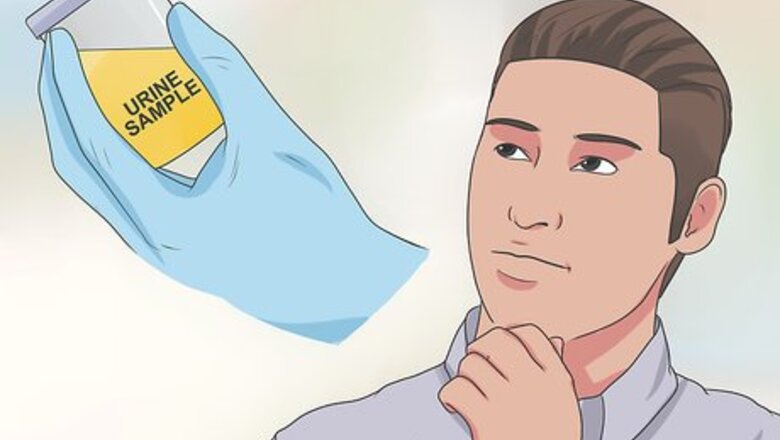
views
Passing a Urine Test
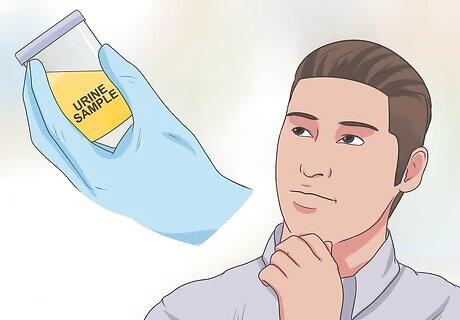
Recognize that urine tests are the most common drug test. If your employer requires a drug test, it is likely that you will be providing a urine sample. In rarer cases, an employer may also require a blood, saliva, or hair test. A urine test may be done privately (in a bathroom stall at a laboratory) or it might be observed by a laboratory employee.
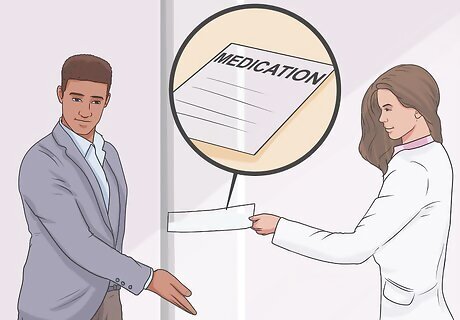
Provide a list of your medications. False positive drug tests are very rare in licensed, reputable laboratories. However, certain prescription medications, over-the-counter drugs, and herbal remedies can be mistaken for drugs of abuse in drug tests. For example, some decongestants might lead to a positive drug test for amphetamines. In order to ensure that your drug test does not provide a false positive, make a thorough list of all your medications and provide the list to your employer, along with any supporting documentation required.
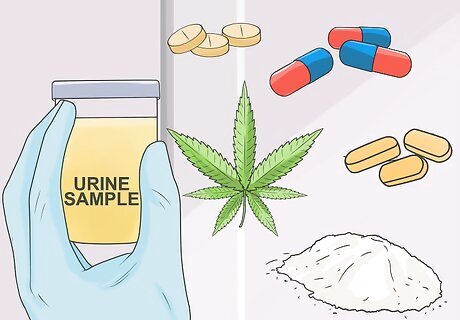
Know what drugs are tested for in the 5-panel test. Urine tests can detect a variety of substances in your system. The particular drugs tested for are depend on a variety of factors: your personal or legal history, the requirements of your job, legal guidelines, or the occurrence of workplace accidents might all affect the specific drugs your employer chooses to test for. However, the most commonly administered drug test is the 5-panel urine test. Most 5-panel tests detect the following drugs: Marijuana Cocaine Opiates Phencyclidine (PCP) Amphetamines
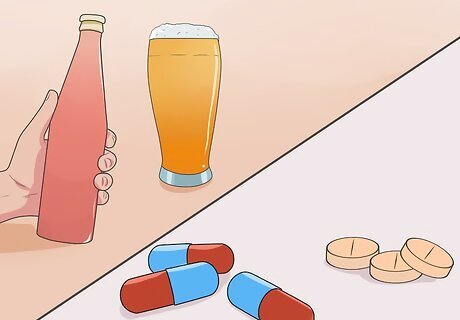
Know what other drugs are tested for. While the 5-panel test is the most common, some employers or legal personnel might choose to add other drugs to their screening. They might add testing for any or all of the following substances: Alcohol MDMA (ecstasy) Barbiturates Propoxyphene Benzodiazepines
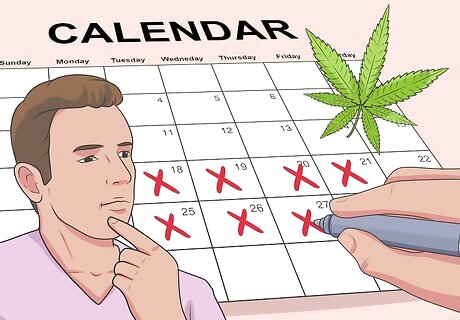
Know how long drugs remain in your system. A urine test does not test your sobriety at the exact moment at which you provided the sample. Instead, it tests your past use of drugs over the past few days or even weeks. Habitual drug users often have higher concentrations of the drug in their systems than occasional drug users. For this reason, habitual drug users may test positively for drugs even after being sober for several days or weeks. Other factors might affect the concentration of drugs in your system, such as your metabolism, quality and amount of drugs taken, hydration levels, and overall health. In general, however, you can expect a urine test to detect drugs for the following times: Amphetamine: 2 days Barbiturates: 2 days-3 weeks Benzodiazepines: 3 days (therapeutic dose); 4-6 weeks (habitual use) Cocaine: 4 days Ecstasy: 2 days Heroin: 2 days Marijuana: 2-7 days (single use); 1-2+ months (habitual use) Methamphetamine: 2 days Morphine: 2 days PCP: 8-14 days (single use); 30 days (chronic users)
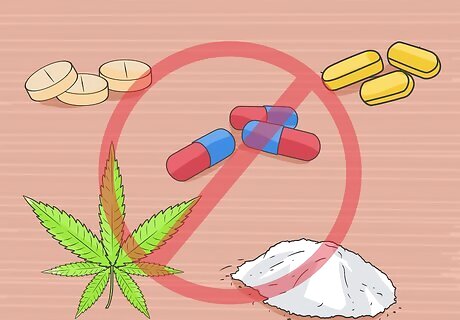
Discontinue drug use for the proper amount of time. The only surefire way to pass a drug test is not to use drugs, especially when you are in the testing window. In some cases, you might know in advance when the test will take place. In other cases, however, you might not have any warning. In that case, consider whether your circumstances will make it likely for you to be tested for drugs in the near future. For example, discontinue drug use if you: Are on the job market Are on probation Are in a profession that requires occasional random drug testing
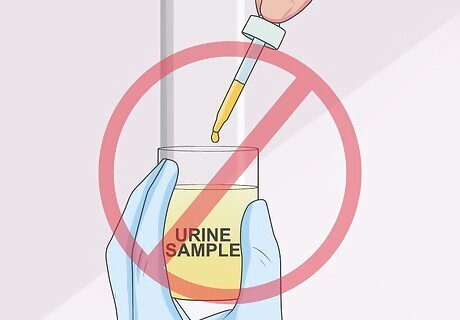
Avoid spiking or masking the urine sample. This is a method used to throw off testing equipment from seeing certain results. Commercial and over-the-counter chemicals containing nitrates were once used to mask THC (the active drug in the marijuana plant) but are now commonly tested for. These products are all detectable, and will result automatically in a failed drug screen.
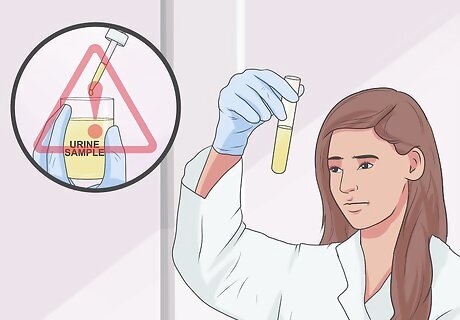
Don't try to dilute the sample. Dilution is the process of reducing the concentration of drug or drug metabolites in the sample. This is accomplished by adding fluid to the sample, and some sites online may recommend it. However, drug testing laboratories all routinely test samples to detect dilution. One method of diluting the sample involves adding liquid to urine. However, the temperature of the urine is measured by drug tests, and diluted urine is easily detected. Another method of diluting the sample is to flush your system by drinking excessive amounts of water. However, drinking excessive amounts of water can be dangerous (people have died from water intoxication) and risky because colorless urine arouses suspicion, possibly flagging the sample. You will likely be asked to provide another sample after a few hours, which will not be enough time for your body to rid itself of drug traces.
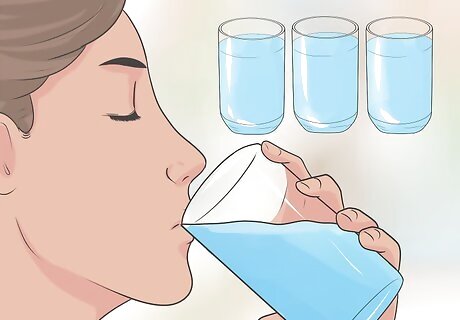
Provide a sample when you're well-hydrated and have urinated earlier in the day. While excessive flushing will likely lead to a failed urine test, you may be able to slightly lower the concentration of THC in your urine if you are well hydrated. For those who have not used marijuana for several days, this might make a significant difference in your drug test result. In order to provide an optimal urine sample, you can: Drink 3-4 glasses of water the morning of your test. Pee at least twice before providing a urine sample. Your early morning urine will have the highest concentration of drugs in your system. Give your body some time to flush these chemicals out, and never use your first pee of the day in a drug test. Drink a coffee or caffeinated soda. Caffeine is a mild diuretic, which can help your body flush out fluids more quickly.
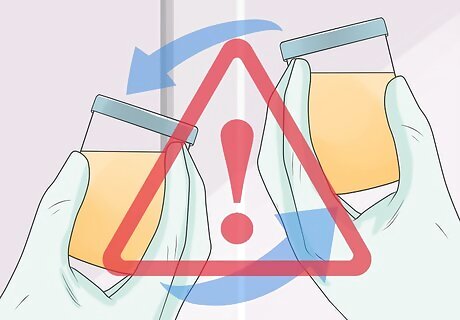
Beware of advice that tells you to substitute the sample. Substitution is a method that involves substituting your urine with that of another person's or a synthetic sample. There are many companies that sell devices for urine substitution over the internet, as well as companies that sell synthetic urine. Be aware that defrauding the urine test might be a crime. In many states, it is illegal to substitute someone else's urine for your own. This could be considered an act of criminal fraud, and you might be putting your job, employment, or legal status at risk. Consider carefully whether it is worth the risk to attempt to defraud a urine test. Synthetic urine comes in two basic forms: the liquid type found in smoke shops that is similar to what is used to calibrate lab equipment; or vials of a powdered concentrate that can be added to a few ounces of warm water. Both are kept in a delivery device with a temperature meter. One of the challenges of urine substitution is ensuring that the urine remains at a normal body temperature (91-97 degrees Fahrenheit). Some labs are now testing for synthetic urine. For your legal protection, it is critical that you do not use this method for any government tests including military, civil service, and especially probation. The liquid premixed urine has a couple of drawbacks as it doesn't have a head or small layer of bubbles on the surface and it has no smell. Powdered synthetic urine does. Many labs and collection sites will reject your specimen if they suspect it is synthetic and ask you to urinate under direct observation. Substituting another person's urine might also be risky, since it is possible that they will not pass the drug test either. Urine also darkens over time, and bacteria can grow, contaminating the sample. If deterioration becomes noticeable the lab may suspect something.
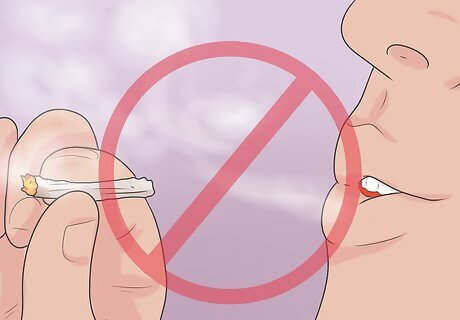
Do not use drugs after passing a urine test. In some cases, an employer or parole officer might ask for a re-test of your urine. Do not celebrate a passed drug test by using drugs: you might simply fail the next one. Be patient, and make sure that your results were believed before taking any further action.
Passing a Hair Follicle Test
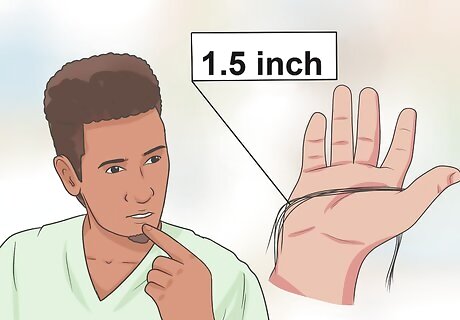
Understand how the hair testing process works. When drug metabolites are in the blood, they'll end up in the blood vessels, including those in the head. The traces of the drug then get filtered through the hair, leading to a failed drug test. Hair drug testing can show the drugs a person may have used over the past several months. It is a more accurate test of long-term drug use than a urine or blood test. A hair drug test involves cutting 50-80 strands of hair from the back of the head, close to the crown. Note that even though the drug test is often referred to as a "hair follicle" test, your skin will not be broken in this test. A minimum length of 1.5 inches of head hair is necessary for the test. If this length of hair is unavailable (such as when the person being tested has a crew cut), body hair such as face, chest, or arm hair can be used.
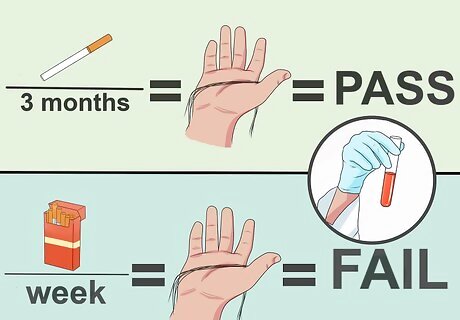
Recognize that hair drug tests are less effective measures of single drug use. A hair follicle test is a more effective test of long-term or heavy drug use. A single, minor use of a drug is much less likely to lead to a failed hair drug test, though it can happen. If you have only smoked a single joint in the past 3 months, you can be cautiously hopeful that you will pass the drug test. However, if you had a period of time where you smoked a joint every day for a week, you are much more likely to fail the drug test.
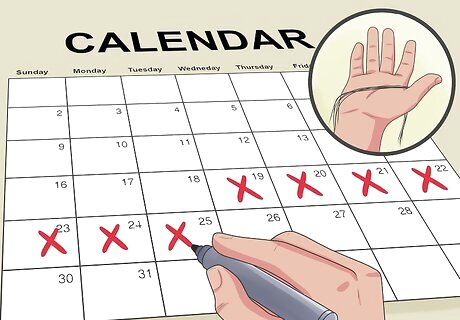
Be aware that drugs take 5-7 days to enter your hair. While a hair drug test is highly effective for past drug use, very recent drug use is harder to detect in this way. It usually takes several days to a week for recent drug use to appear in your hair. For this reason, some employers and agencies will require that you take both a hair test (for long-term drug use) and a urine test (for short-term drug use).
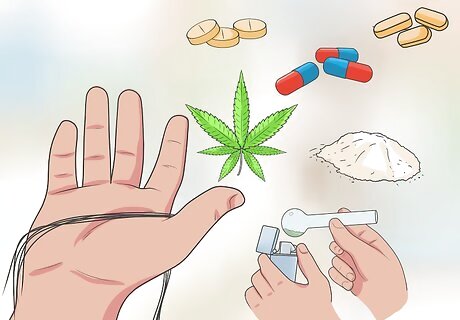
Know the drugs that will be tested for in the 5-panel test. One of the more common hair follicle tests is the 5-panel drug test. Like the urine 5-panel test, the hair follicle 5-panel test detects traces of the following drugs: Marijuana Cocaine Opiates Amphetamines (including ecstasy, meth, and molly) PCP
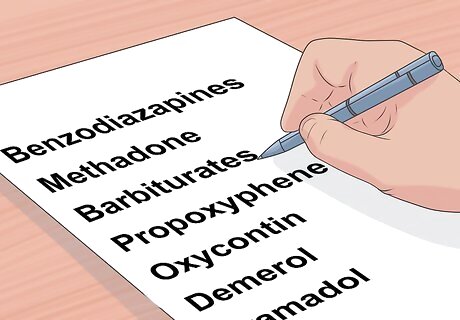
Know other drugs that can be tested for. Some employers or legal agencies choose to test for additional drugs outside of the traditional 5-panel test. These drugs include many categories of prescription medication in addition to common street drugs. These drugs include: Benzodiazepines Methadone Barbiturates Propoxyphene Oxycontin Demerol Tramadol
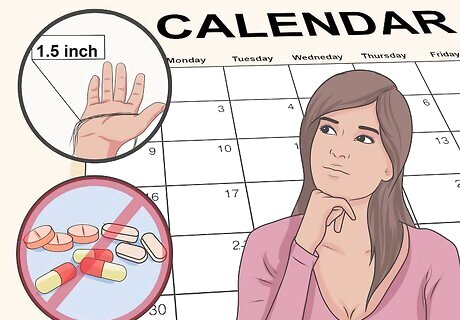
Stop use of all drugs 90 days before the test. In general, the portion of hair that is tested is the 1.5 inches of head hair closest to the crown of the head. This portion of hair is enough to test your use of drugs in the past 90 days. The only way to be sure to pass a hair test is not to have drugs in your system during this period.
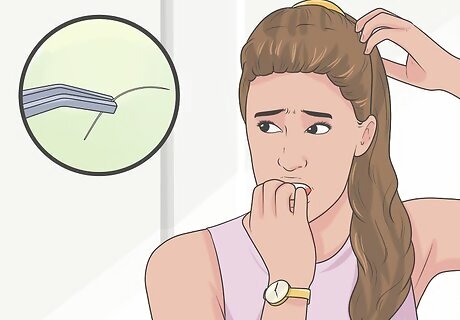
Be aware that hair tests are very difficult to fool. Many of the techniques used to fool a urine drug test are not suitable for a hair test. For example, your hair sample is often collected by a lab assistant directly since there are no privacy concerns (as there are for a urine sample). There are no chemical masking agents or dilution methods that can lower toxins in the hair. And a temporary stoppage of drug use is not sufficient to pass most hair drug tests. The very high success rate of the hair drug tests is precisely why many employers and legal agencies use them. It is particularly difficult for people with dark colored hair to fool a hair follicle test. For this reason, there are many claims that hair drug tests are ethnically biased and racist.
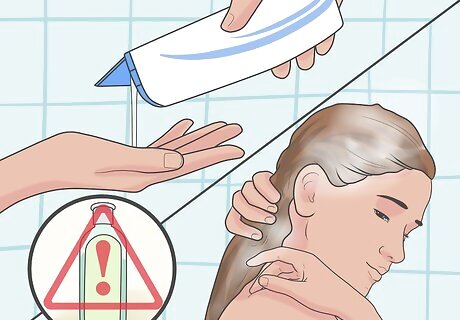
Be cautious about special shampoos and rinses. There are a number of shampoos on the market that claim to help you pass a hair follicle drug test. However, none of these effects have been scientifically proven, and any evidence of their success is anecdotal and possibly suspect. A potential home remedy that has been rumored to be successful involves rinsing your hair with white vinegar, salicylic acid, and laundry detergent, followed by using a temporary hair dye. This treatment is unproven but is also relatively inexpensive and, as long as you keep these chemicals out of your eyes, has few side effects. Some studies show that cosmetically treated hair is less likely to show traces of cocaine.
Passing a Saliva Test
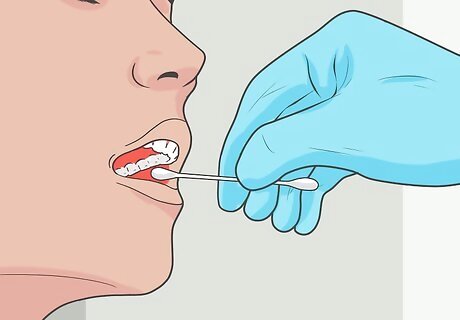
Know how the test works. Saliva/oral fluid-based drug tests can generally detect drug use during the previous few hours and days. They're becoming more prevalent because of their convenience, non-invasiveness, and low cost. Saliva tests can detect any drug that can also be found in the blood.
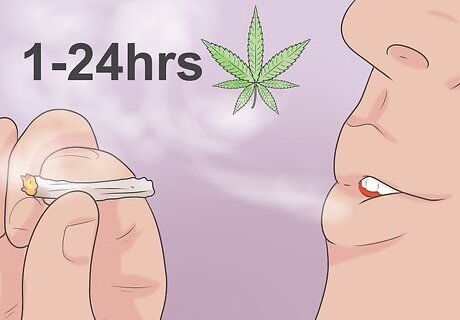
Know the detection times. Drug detection in saliva tests begins immediately upon use and can continue for up to 4 days. However, many light drug users might be able to pass a saliva test as soon as 26-33 hours after drug use.. For this reason, some people consider a saliva drug test to be a more useful diagnostic for impairment than general drug-related behavior. People in professions that are concerned about impairment (such as commercial trucking companies) might be more likely to take a saliva drug test for this reason. The drug detection times in general are as follows: Marijuana and hashish (THC): An hour after ingestion, and up to 24 hours depending on use. Cocaine (including crack): From time of ingestion up to 2 to 3 days. Opiates: From time of ingestion up to 2 to 3 days. Methamphetamine and ecstasy: From time of ingestion up to 2 to 3 days. Benzodiazepines: From time of ingestion up to 2 to 3 days.
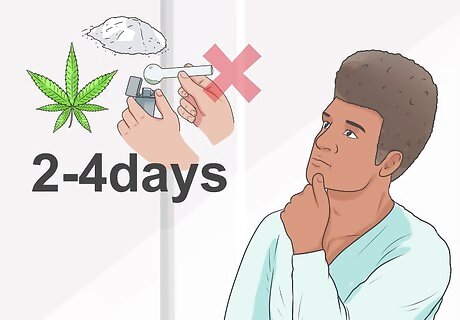
Refrain from drug use within 2-4 days of getting tested. Most saliva drug tests are taken directly at a laboratory, making it difficult to substitute samples or contaminate your saliva. Unlike a urine test, there are no privacy concerns with a saliva test, meaning that you might be watched throughout the duration of the test. The only guarantee of passing a drug test is refraining from drug use during the detection period, 1-4 days prior to the test.
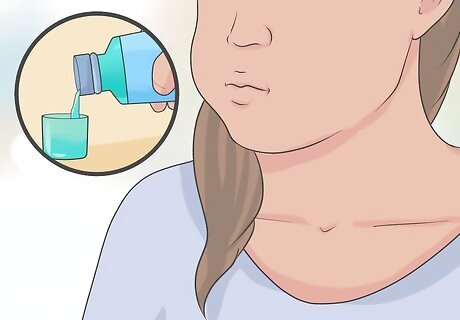
Rinse your mouth with food, beverages, or mouthwash. Studies show that eating, drinking, brushing your teeth, or using mouthwash might have a temporary effect on saliva drug test results. However, these effects disappear after 30 minutes or so. For this reason, many drug companies require that you do not eat or drink for 30 minutes prior to the test. During this period, you might be observed in the laboratory. However, if you are not observed, you might be able to get away with rinsing your mouth with a commercial mouthwash. It is possible that you might be asked to re-take the test if this contamination is detected.
Knowing Common Drug Testing Circumstances
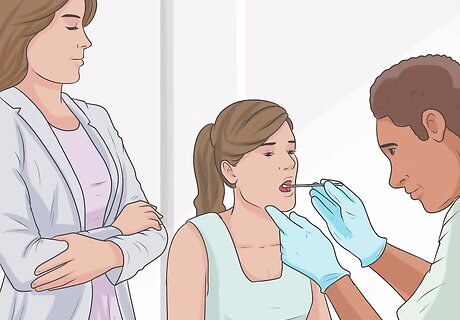
Know when you might be observed during a drug test. There are many situations that may require an observed test. If you hold a Commercial Driver's License and provide a specimen that is outside of the acceptable temperature range or shows signs of tempering or it requires an immediate, observed retest.. Some employers require an observed collection for professionals (doctors, nurses, etc) who have been a history of drug or alcohol abuse. You can of course always refuse to provide an observed specimen, but there may be repercussions including job loss.
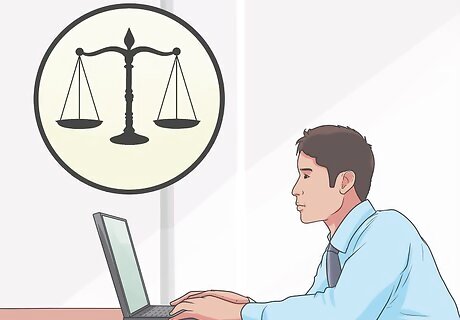
Know the law. At least ten states (Arkansas, Illinois, Maryland, Nebraska, New Jersey, North Carolina, Oklahoma, Pennsylvania, South Carolina, Virginia and Texas) have outlawed the sale of synthetic urine or adulterants for the purpose of passing a drug test. Be aware of this as you consider your options.

Recognize when you are likely to be tested. Employers are currently allowed by law to require that workers submit to urinalysis or saliva screening to be considered for employment and/or to retain their employment. States have laws which often limit how and when testing can be done, such as requiring that the company have a written policy or that 'random' testing not be used. However, some circumstances when you are most likely to be tested include: During the hiring process. You do not have to submit to a blood test as a job applicant. However, a potential employer can make passing a drug test a requirement of a conditional job offer once it is extended to you. For example, this may be the case if you are being hired for a substance use treatment facility, psychiatric hospital, etc. If you are a pregnant woman in the hospital. In the United States, some states have required pregnant women to be tested for illegal drug use as part of their prenatal care. The US Supreme Court ruled the secret testing of women unconstitutional in the case of Ferguson v City of Charleston, in March 2001. However, women who arrive to deliver in a hospital have their blood tested routinely. A delivering mother could face endangerment charges or even worse if traces are found in her blood. If you operate a vehicle or heavy machinery. Jobs where lives might be put in danger when an employee is impaired--such as construction or truck driving--often require routine tests for impairment. If you have a federal or government job. If you exhibit suspicious behavior. If you commit an accident in the workplace, have slurred speech, or behave erratically, your employer might require you to take a drug test as a condition of your employment.
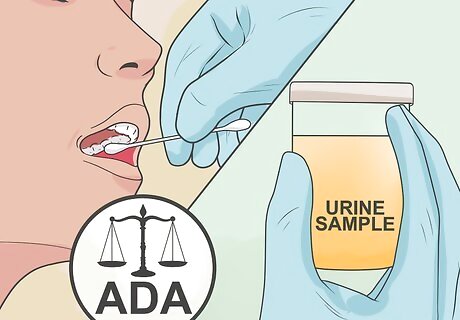
Know when drug testing is not permitted. Laws vary from state to state and change frequently. You can find out the details of your state´s drug testing laws by contacting a trade organization, your state government or an employment lawyer. Your right to test workers for drug use depends on several factors. Drug testing also falls under the Americans with Disabilities Act (ADA), which includes several key features: The ADA makes it illegal for any employer to test a prospective employee without first making a conditional offer of employment. The ADA also says you can't discriminate against prospective employees on the basis of past drug-related problems. Then again, you may refuse to hire people if you have reason to believe they will return to substance abuse or endanger the safety and health of your workers. If you aren't sure how to proceed with an applicant who has a history of drug abuse, consult an attorney. The ADA doesn't prohibit asking a person with a history of substance abuse to enroll in a rehabilitation program before joining your firm.
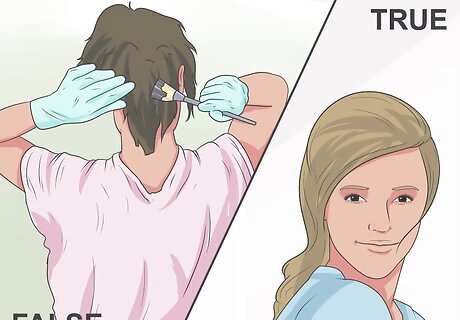
Know what's true and what's not about drug testing. There are a number of false rumors and unsubstantiated claims about passing drug tests. There are also a number of commercial products that promise customers they will be able to pass a drug test without backing up these claims with evidence. Common myths include: Secondhand smoke. Cut-off levels are set so as to keep one failing due to casual secondhand smoke. Poppy Seeds. The current recommended cutoff level was raised from 300 ng/mL to 2,000 ng/mL in 1998 in order to avoid false positives from poppy seeds You would need to eat a whole loaf of poppy seed to register for even one day. Bleach. Adding bleach to nullify a urine sample will change the pH and flag the sample as being tampered and you will fail. Drinking bleach will blind you and maybe kill you. Aspirin. Aspirin has been claimed to create a false negative for THC. This only works under ideal circumstances and only for certain kinds of test. It is not a guarantee of passing. Bleaching and redyeing your hair will not remove the metabolites from hair during the hair follicle test. However, natural blondes are more likely to pass a hair follicle test.














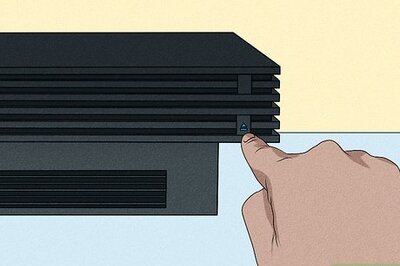



Comments
0 comment